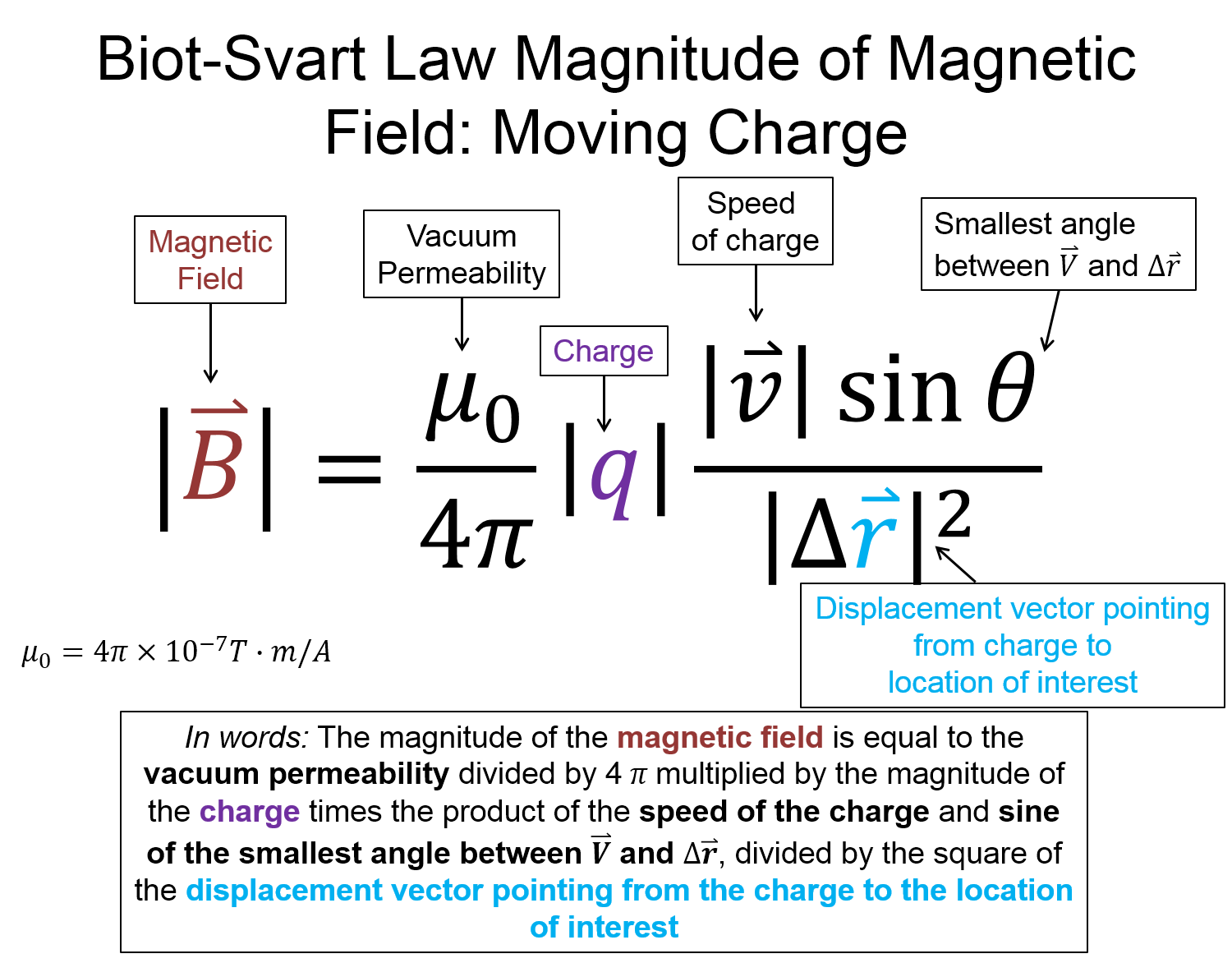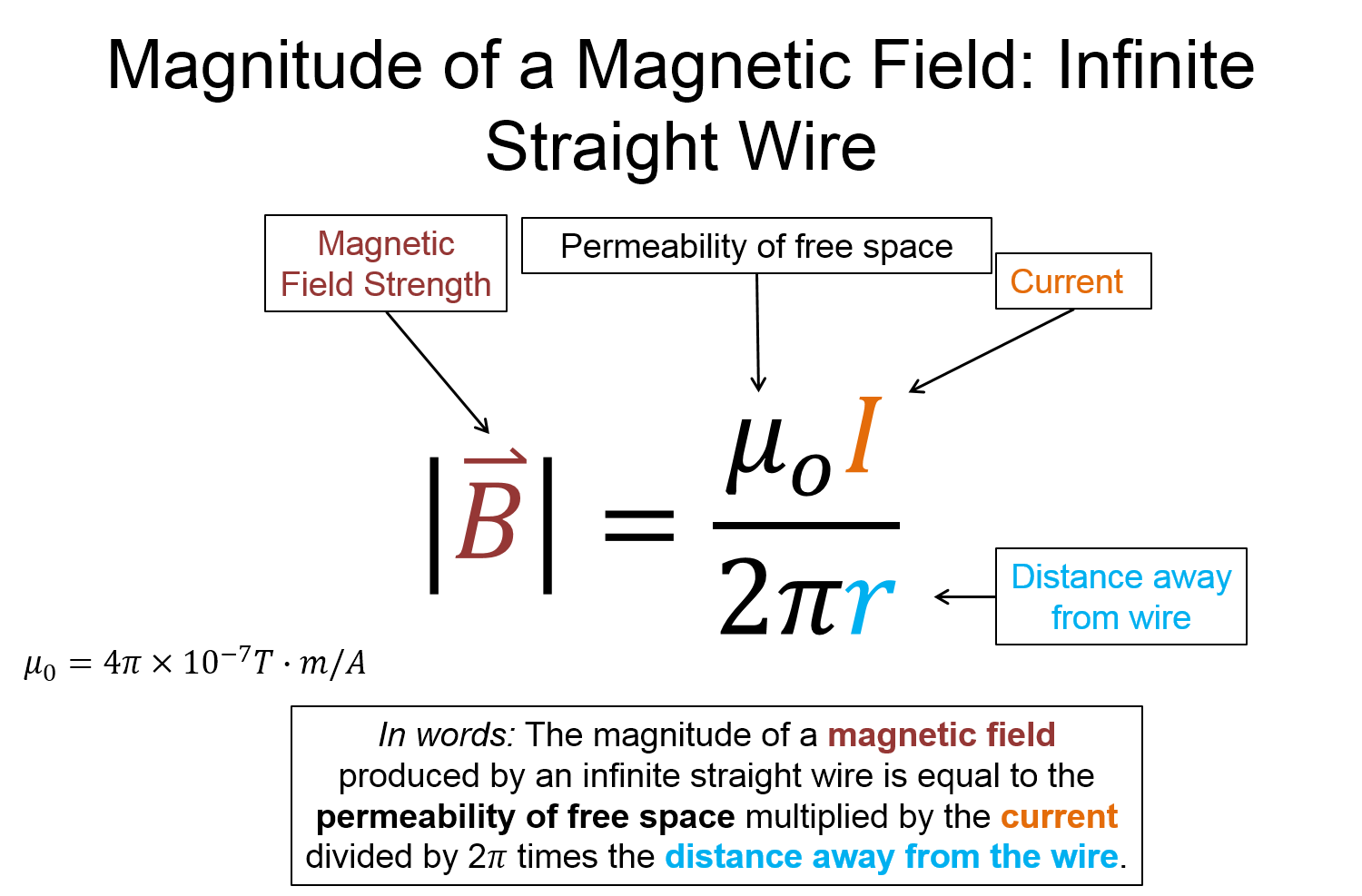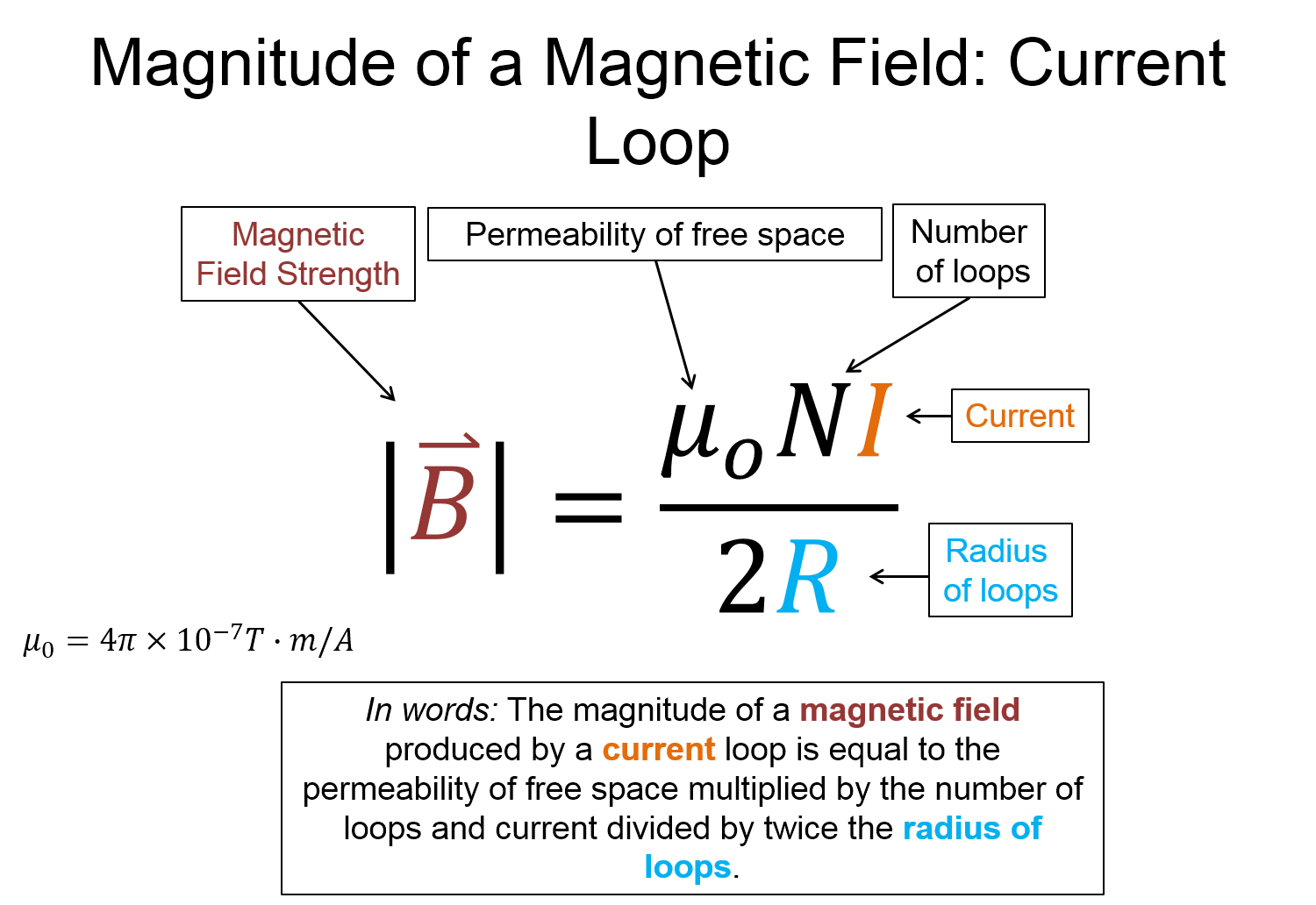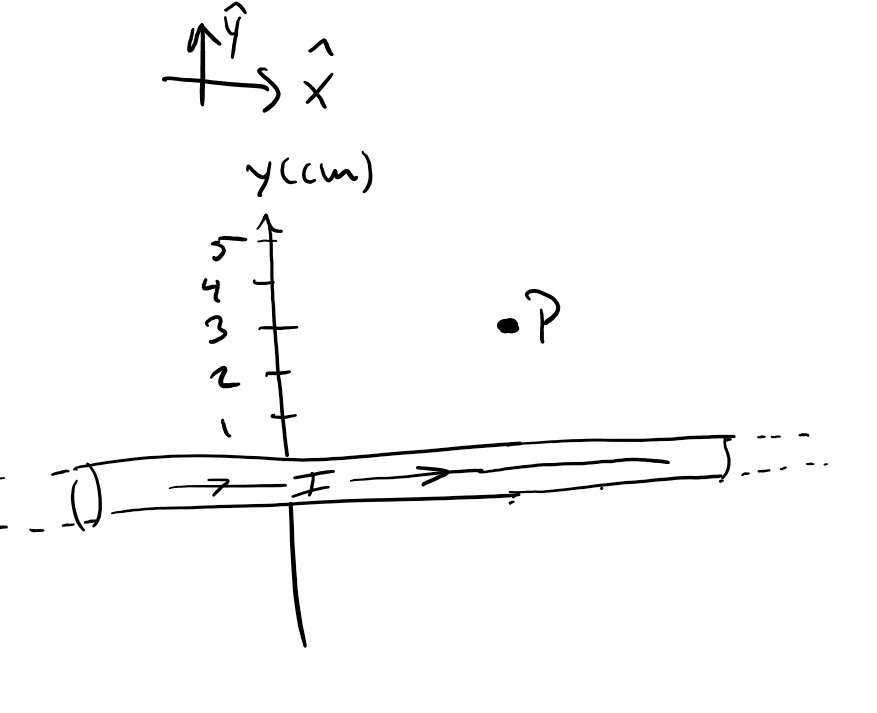Slow Motion Magnetic Fields!
Pre-lecture Study Resources
Watch the pre-lecture videos and read through the OpenStax text before doing the pre-lecture homework or attending class.
BoxSand Introduction
Magnetic Effects | Magnetic Fields
Key Equations and Infographics



Now, take a look at the pre-lecture reading and videos below.
BoxSand Videos
Required Videos
Magnetism - B-field overview (4min)
Magnetism - B-field from a point charge (15min)
Magnetism - Right Hand Rule for Biot-Savart (6min)
Magnetism - B-field from a straight wire (12min)
Suggested Supplemental Videos
none
OpenStax Reading
OpenStax Section 22.1 | Magnets
OpenStax Section 22.2 | Ferromagnets and Electromagnets
OpenStax Section 22.3 | Magnetic Fields and Magnetic Field Lines
OpenStax Section 22.9 | Magnetic Fields Produced by Currents: Ampere’s Law
Fundamental examples
(1) The wire in the diagram below has a magnitude $I = 10 mA$. What is the magnitude and direction of the magnetic field from this current-carrying wire at point P on the diagram?

(2) A loop of wire with radius $r = 5 cm$ carries a current with magnitude $I = 100 nA$, traveling in the counter-clockwise direction as viewed from above. What is the magnitude and direction of the magnetic field at the center of the loop?
(3) In the diagram below, the vertical wire carries a current of magnitude $I_1 = 4 A$ in the positive y-direction and the horizontal wire carries a current of magnitude $I_2 = 2 A$ in the negative x-direction. What is the magnitude of the magnetic field at point P?

Solutions found here: 1(direction should be out of page!), 2, 3
Short foundation building questions, often used as clicker questions, can be found in the clicker questions repository for this subject.
Post-Lecture Study Resources
Use the supplemental resources below to support your post-lecture study.
Practice Problems
BoxSand practice problems
BoxSand's multiple select problems
BoxSand's quantitative problems
Recommended example practice problems
- Openstax has practice problems toward the end of each section,
For additional practice problems and worked examples, visit the link below. If you've found example problems that you've used please help us out and submit them to the student contributed content section.
Additional Boxsand Study Resources
Additional BoxSand Study Resources
Learning Objectives
Summary
Summary
Atomistic Goals
Students will be able to...
YouTube Videos
Pre-Med Academy's video series on magnetism. The first discusses the phenomena that is magnetism, the second talks about magnetic fields
Other Resources
This link will take you to the repository of other content related resources for impulse.
Simulations
Phet interactive with amgnets and the amgnetic field. Explore the interactions between a compass and bar magnet. Discover how you can use a battery and wire to make a magnet! Can you make it a stronger magnet? Can you make the magnetic field reverse? Can you predict the direction of the magnetic field based on the placement of the magnet?
For additional simulations on this subject, visit the simulations repository.
Demos
History
Oh no, we haven't been able to write up a history overview for this topic. If you'd like to contribute, contact the director of BoxSand, KC Walsh (walshke@oregonstate.edu).
Physics Fun
Other Resources
Resource Repository
Boundless online text has two sections, Magnetism and Magnetic Fields, and Ferromagnets and Electromagnets.
| Magnetism and Magnetic Fields | Ferromagnetics and Electromagnets |
PPLATO is a complete resource with a lot of information, and several practice questions per subject. This webpage covers Magnets and Magnetic Fields.
Boston University text page for magnetism.
Isaac Physics' section on the magnetic field
Other Resources
This link will take you to the repository of other content related resources for impulse.
Problem Solving Guide
Use the Tips and Tricks below to support your post-lecture study.
Assumptions
Checklist
Misconceptions & Mistakes
Pro Tips
Multiple Representations
Multiple Representations is the concept that a physical phenomena can be expressed in different ways.
Physical
Mathematical



Graphical
Descriptive
Experimental